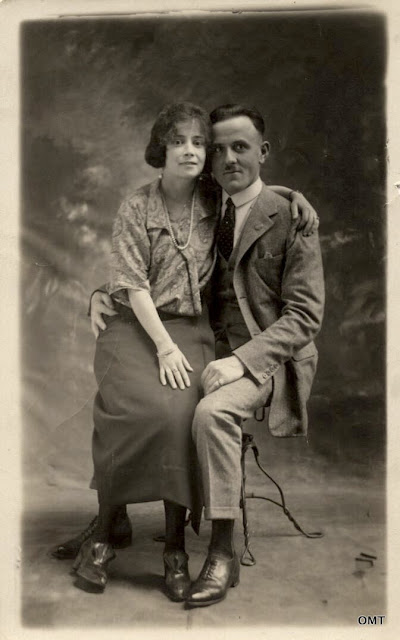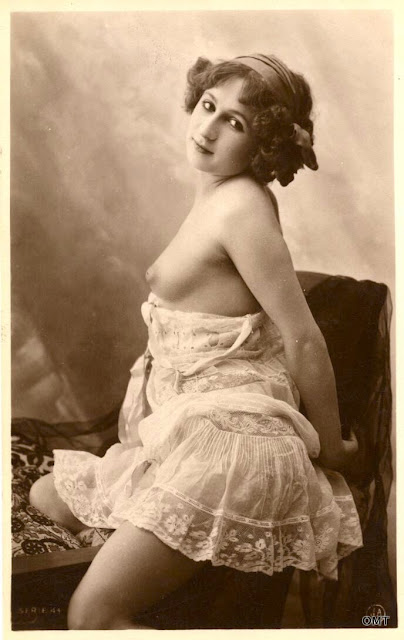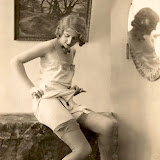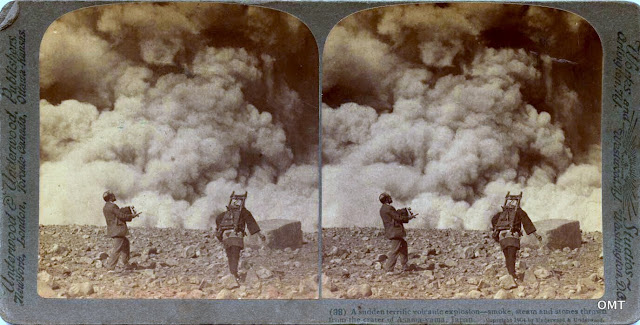Studio
portraits from around the world
“If you
understood everything I said, you’d be me.”
Miles Davis
Reading American histories of photography can give the
impression that not much happened beyond the borders of the US. In particular
there is a persistent line that vernacular photography is somehow indigenous to
the U.S. Luc Sante says as much in Folk
Photography, it is an underlying argument in The Art of the American Snapshot and these are good books by
respectable scholars. If you accept the argument that it is indigenous then
everything is framed within an American consciousness (whatever that is) but if
you say it isn’t, it is global, things become much more interesting. Why, for
one, did everyone behave the same way in front of and behind the camera? And
despite all the work scholars put into identifying national characters
(especially in countries like Australia where the notion is extremely fluid or
possibly never existed) do photographic portraits expose the futility of the project?
The above portrait comes from Cuba, but you wouldn’t know that unless you read
the inscription on the back. It was bought in Turkey. The family could easily
be Turkish.
Here’s one from China. Obviously the man is Asian and
there’s a banner with Chinese script around the tree but if you consider just
his posture and the other details in the backdrop, you couldn’t say for sure
this wasn’t taken in San Francisco or London or some other western city with a
high Chinese population. The painting might look Oriental though I’m not sure
we would think that if the subject was European and the script on the banner
was Cyrillic. Then you have to ask what difference that would make.
A case in point: The backdrop in this Bulgarian portrait is
just as elaborate and what might first appear to be a mountain in the
background is a village. There’s one in the Chinese postcard as well. Both men
have a poise that suggests they want to appear relaxed but can’t quite get
there. Perhaps the backdrop affects them; it does give an air of artificiality
to the scene that they might have found absurd.
There has been a bit of work in recent years analysing
posture and gaze in studio portraiture. A lot of it is unconvincing. Americans
might assume the real photo postcard is indigenous but they don’t get into the
same difficulties as people trying to find cultural or ethnic distinctions in
portraits. They make the same mistake; excluding examples that sully their
case, but also they are frequently reduced to taking into account other details
such as dress to make their point. Gesture and gaze are too ambivalent. This
one is from Australia. Because of that, I’m inclined to think her muff is made
from kangaroo pelt. It helps identify where she comes from, because nothing else in the
photo does.
Position in photographs is important. In April 2012 the
Turkish newspaper Aydinlik ran two portraits side by side under
the headline “Bize Hangisi Yakışır”, or ‘which suits us best?” One showed
President Kemal Ataturk and Prime Minister Fethi Okyar standing stiffly behind
their wives, who were seated. Next to that was a studio photo of President Gül
and Prime Minister Erdoǧan sitting, tieless and relaxed while their wives stood
behind them. The article was obscure in its intention. The newspaper is associated
with left wing trade unions and critical of the present Government. It is also
worth recalling that Ataturk extended many rights to women, including the vote,
while under the AKP, the status of Turkish women according to international
indexes has noticeably diminished, yet the comparison appeared to suggest that
Gül and Erdoǧan were comfortable giving power to their wives. The suspicion is
that the newspaper tried to take a swing at the Government and missed;
nevertheless the example shows how important position and posture can be in
formal portraits.
According to these codes, the person in the highest
position, the woman in this American portrait, has some dominance over her
husband, but from the looks of things he’d disagree. There’s a sense, and you
get this from his posture, that he knows where the power ultimately rests.
And what about this one from Canada? Does it actually say
something about marital relations in Canada in the 1920s, or is it only about
the marriage between these two? It was bought in Montreal and might have come
from Quebec but in that case bear in mind that while in most Canadian provinces
women got the vote around 1918, in Quebec they didn’t until 1940, well after
Turkey. If we want to take the point of view that position and posture in
photographs reflect social standing across the whole society, this image messes
things up. If we consider it instead as reflecting the situation of two
individuals, we have to wonder how much we can attribute to position and
posture. (You’ll notice, by the way, how most of the men have similar
moustaches despite coming from different countries. What could that mean?)
So, a Romanian boy …
Is not that much different to a Turkish boy …
Whose mother could be French …
Or German …
Or Filipino...
Whatever the case, American claims that there is something indigenous about vernacular photography are false but so are notions we can divine any implicit cultural meaning from gesture, position or posture. If these portraits reveal anything it is not what we are looking for.
Whatever the case, American claims that there is something indigenous about vernacular photography are false but so are notions we can divine any implicit cultural meaning from gesture, position or posture. If these portraits reveal anything it is not what we are looking for.
 |
| ANGLO SAXON ATTITUDES |




































